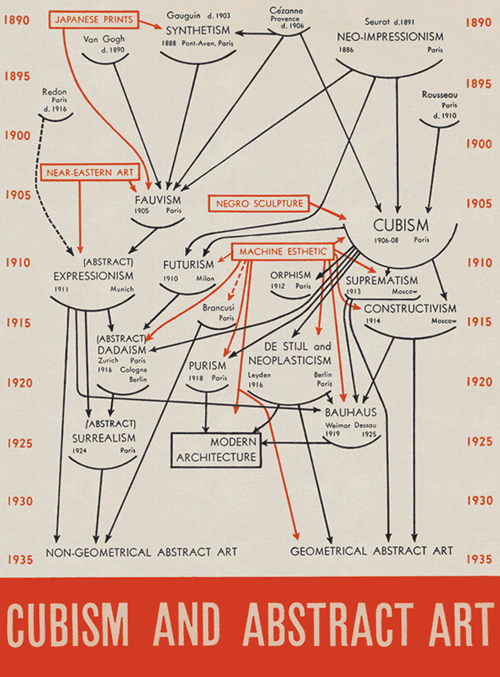

One of the perks of this job is unexpectedly getting review copies of books in the mail. A few days ago, a package from Princeton Architectural Press got plunked down on my doorstep (always a joyful sound). I’ve been absolutely enthralled by its contents ever since I pulled it from the padded envelope.
Cartographies of Time, by Daniel Rosenberg and Anthony Grafton, literally impresses you with its point from the moment you take it in-hand. Subtitled “A History of the Timeline,” the book itself is corrugated with horizontally-embossed lines on its covers. The effect is delightful (signaling right up front that this book is something special) and things just keep getting better as you travel deeper into the text.

Those lines on the cover begin the journey of mapping time, which threads its way through the book’s surprisingly engaging text and images (the book itself being a meta-timeline). Cartographies of Time is absolutely gorgeous (the NY Times book blog called it possibly the most beautiful book of the year), with lots of illustrations and photographs showing how humans (of the European persuasion, anyway) have chosen to depict the flow of time and the events that we anchor to it. I was shocked to discover that the first evidence of the use of timelines as we know them only dates back 250 years. The book looks at timeline antecedents, in annals, chronologies, and other pre-timeline technologies, and how the emergence of printing, scientific research methods of the 18th century, and the work of timeline pioneers such as Joseph Priestley, helped establish the visual vocabulary of time-mapping that we recognize today.

1672 — In Johannes Buno’s universal history, every millennium before Christ is figured as a large allegorical image, such as the dragon of the fourth millennium depicted here.

1753 — Jacques Barbeu-Dubourg’s 54-foot-long “Chronographie universelle,” mounted on two cranks and enclosed in a case. This one, at Princeton University, still works.

1765 — English chemist Joseph Priestley publishes the first of several timelines that contemporary audiences would recognize as such. “A Chart of Biography” compares the life spans of 2,000 celebrated men, from 1200 BC to AD 1750, using bars set against a linear time axis to denote their life spans.
One of the things I especially appreciated about this book is that it ventures beyond historiographic applications of timelines and looks at their use in modern art and popular culture. The work of Fluxus artist George Maciunas is featured. Maciunas was an obsessive chart-maker and used a lot of charts and timelines in his artwork. Iconic popular time displays, such as the Bulletin of the Atomic Scientists‘ “Doomsday Clock,” are discussed. And toys, puzzles, and games that made use of time mapping are explored.

[Left] 1844 — “Stream of Time,” a 30-foot-long scroll in a book-like box, with general history in the left column and scriptural history on the right (replaced later in the chronology by British history :-) [Right] 1825 — “Darton’s Pocket Tablet of Chronology,” a five centimeters high scroll-chart of history.

1936 — Alfred H Barr, Jr.’s cover of the “Cubism and Abstract Art” catalog, MOMA.
This is the type of artful and enlightening tome that makes me thrilled to be a book nerd. It’s the sort of title that I’ll have fun turning other book, history, design, and art enthusiasts onto. Like I hopefully just did with you! (Between this book and John Carrera’s trade version of his Pictorial Webster’s, it’s a great year for lovers of book art.)
BTW: Cabinet magazine, where Daniel Rosenberg is editor-at-large, has an audio program recorded with him and co-author Anthony Grafton. You can listen to it here.
Cabinet also has a Timeline of Timelines article and sells a 72″ x 17″ poster of the article’s content.
A slideshow of images from Cartographies of Time can be found on the New York Times website.
More:
- Lost Knowledge: Magic lanterns
- Lost Knowledge: Sign painting
- Lost Knowledge: Wood engraving and Pictorial Webster’s
- Lost Knowledge: “Artistic printing”
- Lost Knowledge: Cable lacing
- Lost Knowledge: Wire-wrapping
- Lost Knowledge: Stick chart navigation
- Lost Knowledge: Timbrel vaulting
- Lost Knowledge: Online resources
- Lost Knowledge: Homemade electronic components
- Lost Knowledge: Island tricks
- Lost Knowledge: Airships
- Lost Knowledge: The Catalog
- Lost Knowledge: The Antikythera Device
- Lost Knowledge: Village tech in West Papua, Indonesia
- Lost Knowledge: Neon lights
- Lost Knowledge: Reanimating Dead Media
- Lost Knowledge: Manual typewriters
ADVERTISEMENT





